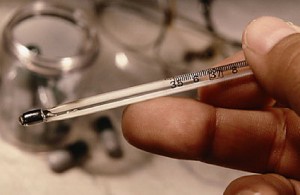 On 1st September 2014 a revised sick leave scheme came in to effect for teachers. The Department of Education and Skills (DES) issued Circular 59/2014 which outlines teachers’ sick leave entitlements. There are a number of significant changes in the revised sick leave scheme compared to the previous scheme.
On 1st September 2014 a revised sick leave scheme came in to effect for teachers. The Department of Education and Skills (DES) issued Circular 59/2014 which outlines teachers’ sick leave entitlements. There are a number of significant changes in the revised sick leave scheme compared to the previous scheme.
Full Pay / Half Pay
The first change which is new for teachers but not to other parts of the public service is the possibility to progress from full pay to half pay while out on sick leave. This is an entirely new change for teachers. Heretofore when a teacher was out on sick leave, they had an entitlement to be paid at the full rate of pay for 365 days over a rolling four year period. This entitlement has now been reduced. The rate of pay that a teacher may receive on sick leave will now depend on the duration of the absence and the type or nature of the illness.
Illness Category
The second change is in relation to the categorisation of the illness. Previously there was no distinction between illness when a teacher was out sick and the type of illness was not a factor in determining the rate of pay. The revised scheme has introduced two categories of illness -Ordinary and Critical-which will determine the rate of pay. Now a teacher who is on sick leave which is categorised as an Ordinary illness will have an entitlement to be paid for 92 days at the full rate and 91 at the half rate of pay. A teacher deemed to be on a critical illness will have an entitlement to 183 days at the full rate and 182 days at the half rate of pay.
In order to delineate whether an illness is Ordinary or Critical a Critical Illness Protocol has been introduced with this scheme. In order to have the illness deemed as Critical a teacher would need to be ordinarily under the care of a consultant and one of these other criteria:
• Acute Life Threatening
• Chronic Progressive Illness
• Major Physical Trauma
• Is an In-patient for two weeks or more
Dual Countback
Another change which is also an entirely new concept in the Teachers’ scheme is the introduction of a “dual countback”. This will determine a teacher’s rate of pay when out on sick leave. Firstly a teacher would need to establish whether they have an entitlement to be paid when out on sick leave. To establish this, a teacher would in the first instance need to look back over the last four years of his/her sick leave record.
For example, a teacher out sick on 15th November 2014 would need to look back to 15th November 2010. Depending on the nature of the illness if 183 or 365 days have not been exhausted then the teacher has an entitlement to be paid. The second or dual look back will determine the rate of pay. To establish whether full or half pay will apply a teacher’s sick leave record over the previous 12 months is examined. For example, if a teacher was paid for ten days at the full rate of pay in the previous 12 months, then that teacher would receive full pay for a further 82 days before progressing to the half rate of pay.
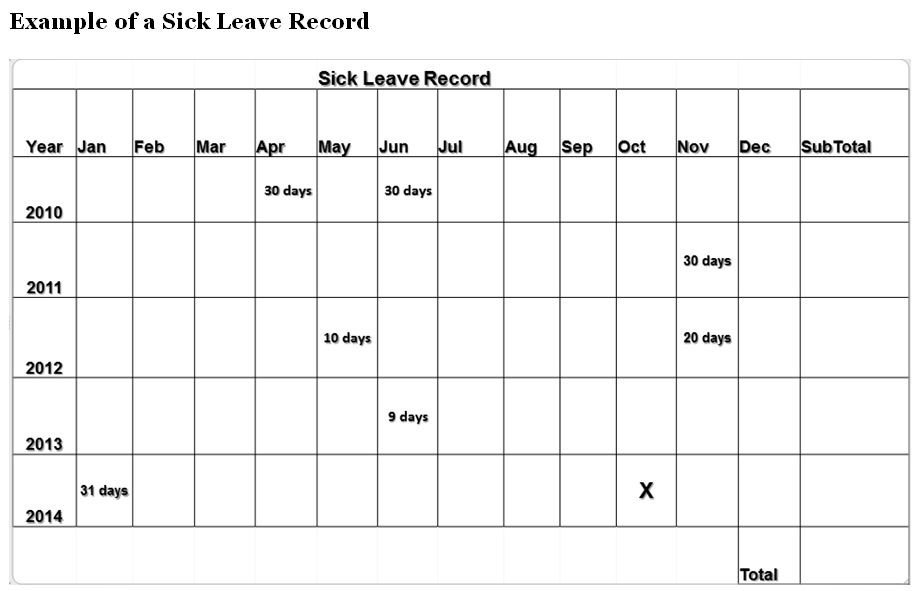
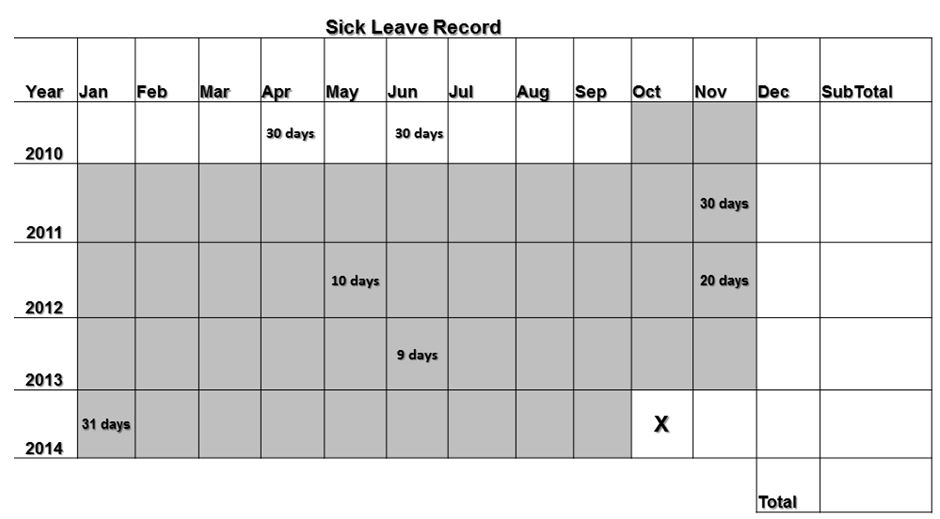
First Lookback: Teacher has used 100 days within the last four years. Therefore has an entitlement to be paid for 83 days.
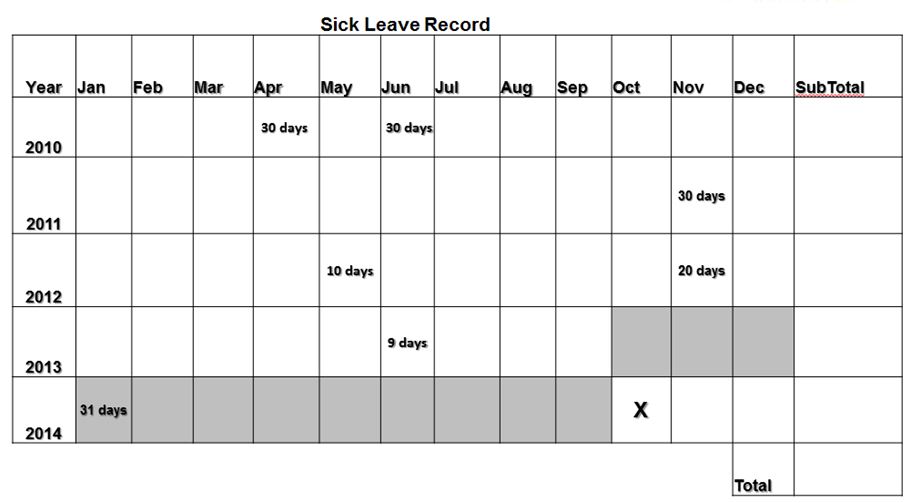
Second Lookback: As the teacher has used 31 days within the last year, he/she would be paid at the full rate of pay for 61 days.
Temporary Rehabilitation Remuneration
A further change in the revised scheme is the introduction of Temporary Rehabilitation Remuneration. Heretofore when a teacher exhausted his/her entitlement to paid sick leave he/she had to apply for unpaid sick leave. A new provision has been introduced. If a teacher exhausts his/her entitlement to paid sick leave, he/she will progress on to Temporary Rehabilitation Remuneration. This is a form of payment which is not pensionable service and will be based on the ill health retirement formula.
• Teachers with between 5 and 10 years’ service may be credited with an equivalent amount of pensionable service (i.e. double the amount of actual service will be allowed).
• Teachers with between 10 and 20 years’ service may be credited with the more favourable of (a) the difference between actual service and 20 years or (b) an additional 6 years and 243 days (i.e. 6 and 2/3 years).
• A teacher with more than 20 years’ service may be credited with 6 and 2/3 years of added service.
Under this scheme a teacher will not drop below the disability benefit rate. Temporary Rehabilitation Remuneration will be paid for 18 months in the case of an Ordinary and 24 months in the case of a Critical Illness.
Pregnancy Related Leave
The treatment of a pregnancy related illness has also changed in the revised scheme. A pregnant teacher on sick leave on a pregnancy related illness and who exhausts her sick leave entitlement under the revised scheme will continue to be paid at the half rate of pay irrespective of whether she has reached the maximum limit for half pay due to prior sick leave. Following maternity leave, if a teacher is subsequently absent on sick leave a period of pregnancy related illness that occurred while a teacher was on half-pay is discounted for the purpose of the dual countback.
There is further information including a Podcast in relation to sick leave on the INTO website. There is also a Sick Leave FAQ section on the INTO website. Members can also ring the Queryline on 1850 708 708 or 01 8047700 should they require any additional information.
 This article was kindly put together by David O’ Sullivan, INTO Official
This article was kindly put together by David O’ Sullivan, INTO Official




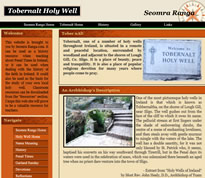

Hi,
The chart part is completely at odds with the initial explanation. The 3rd chart called first look back says that a person can have 31 days + 61 days paid sick leave in 1 year ie 2014….is it not 92 days over a 4 year period????
The first 2 charts, called example of sick leave record, say a person will get full pay for 183 days in every 4 years????
I cannot understand why the teacher unions are not fighting the pregnancy related illness on the grounds of discrimination. Men do not become pregnant and therefore the new regulation discriminates against female teachers. If you look at equality appeal cases I think you will find that precedent has already been set in this matter.
Just don’t get sick folks……ever. No seriously, dont!!